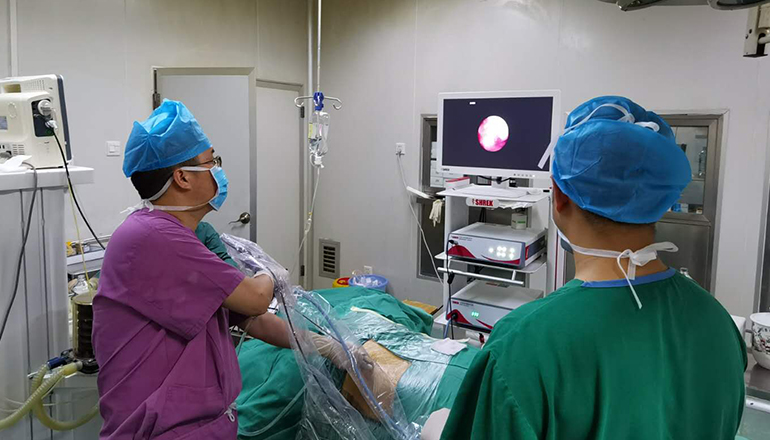- Shanghai, China
- [email protected]
- +86-21-58189111
Cystoscopy is a minimally invasive surgical procedure that allows urologists to examine the bladder and urethra using a cystoscope, a thin and flexible instrument equipped with a camera and a light source. This technique has revolutionized the diagnosis and treatment of various urological conditions, such as bladder tumors, urinary tract infections, kidney stones, and urethral strictures, among others. However, traditional cystoscopy has some limitations, such as limited visualization, difficulty in navigating tight spaces, and lack of depth perception, which can lead to incomplete or inaccurate diagnosis and treatment.
3D endoscopic technology is a novel approach that overcomes some of the limitations of traditional cystoscopy by providing a more immersive and realistic view of the anatomical structures. This technology uses two cameras that capture images from slightly different angles and a 3D monitor that combines the images to create a stereoscopic view. This view allows the surgeon to perceive depth and distance accurately, which facilitates the navigation and manipulation of instruments, and enhances the precision and safety of the procedure.
The application of 3D endoscopic technology in cystoscopy surgery has several advantages, including:
Improved visualization: The 3D view provides a more detailed and realistic representation of the bladder and urethra, which enables the surgeon to detect and evaluate abnormalities with higher accuracy and confidence.
Better depth perception: The 3D view allows the surgeon to perceive the distance and position of the instruments and tissues more accurately, which reduces the risk of accidental injury and improves the efficiency of the surgery.
Enhanced ergonomics: The 3D monitor allows the surgeon to maintain a more natural and comfortable posture during the surgery, which reduces the risk of musculoskeletal injuries and fatigue.

Shorter operating time: The improved visualization and precision of the 3D technology can reduce the operating time and minimize the need for repeated procedures, which can save time, cost, and discomfort for the patient.
Improved patient outcomes: The use of 3D technology can improve the accuracy and completeness of the diagnosis and treatment, which can lead to better clinical outcomes and quality of life for the patient.
Despite its advantages, 3D endoscopic technology also has some challenges and limitations, such as the need for specialized training, the higher cost and complexity of the equipment, and the potential for technical errors and system failures. Therefore, the adoption of this technology should be based on a careful evaluation of its benefits and risks, and a comprehensive training and quality control program should be implemented to ensure its safe and effective use.
In conclusion, the application of 3D endoscopic technology in cystoscopy surgery represents a promising advancement in urological care that can enhance the visualization, precision, and safety of the procedure. However, its implementation should be guided by evidence-based practice and best practices, and its potential benefits and limitations should be carefully considered and communicated to patients and healthcare providers.
Leave a Comments